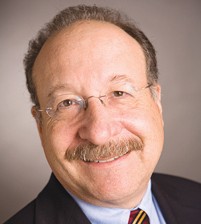Dubroff: UCSB names engineering school for former dean
IN THIS ARTICLE
- Higher Education Topic
- Jorge Mercado Author
By Jorge Mercado Thursday, June 26th, 2025
When I met Teledyne executive chairman Robert Mehrabian at his office in Thousand Oaks earlier this year, I came away thinking I had just been introduced to a multi-talented scientist-entrepreneur.
So, it was not entirely surprising to learn that UC Santa Barbara’s world-class engineering school will now be called the Robert Mehrabian College of Engineering, honoring a former dean who has given back to the university – and helped transform the Central Coast into a global center for imaging and sensor technology.

“UC Santa Barbara is so fortunate for the long-standing relationship that our college of engineering has had with Robert Mehrabian,” UCSB Chancellor Henry T. Yang wrote. “His talent as an academic, vision as an industry leader, and generosity as a philanthropist have helped to shape our College of Engineering over the decades.”
“He’s a force of nature,” said Megan Tremer, president of Teledyne Space Imaging, told me over the phone. “He brings deep understanding of technology – and business sense,” she said. “He knows your business numbers better than you do.”
From 1983 to 1990, Mehrabian helmed UCSB’s engineering school, where he recruited 69 new faculty and built a department known for excellence in materials science, industry collaboration and interdisciplinary study. He left to become president of Carnegie Mellon University and then surprised some of his peers when he joined Teledyne, a relatively small defense and technology firm.
Under Mehrabian’s leadership as CEO, Teledyne’s exponential growth in profits and revenue have been best in class. The company’s capstone acquisition of infrared sensor maker FLIR Systems for $8 billion in cash and stock in 2021 gave it a bigger footprint in the Santa Barbara area.
All the while, Mehrabian has remained supportive of UCSB and Chancellor Yang. Over the past 14 years, he and his wife Victoria have helped fund 17 endowed chairs and provided “flexible funds to help recruit and retain top engineering faculty,” according to a UCSB statement.
“Dr. Mehrabian didn’t just build a college – he created a model for how engineering education should work,” said UCSB Dean of Engineering Umesh Mishra. “His vision of collaboration across departments laid the foundation for the top-tier national rankings our engineering programs enjoy today.”
An Armenian-American, Mehrabian received his undergraduate and doctorate degrees from MIT, where he also was a professor. He holds numerous U.S. and international patents.
At an age when many CEOs would be hitting the golf course, Mehrabian continues to serve as executive chairman and when I spoke to him briefly after the announcement he said he remains enthusiastic about the crucial role the Central Coast plays in space exploration and national defense.
In addition to the former FLIR center near Santa Barbara’s airport, Teledyne has a large operation in Camarillo, as well as its Conejo Valley research center and headquarters.
Tremer said that Teledyne alone employs about 750 high tech workers, many with advanced degrees, in the area. Adding in large employers like Raytheon/RTX and startups she estimates that imaging related work generates revenue approaching $1 billion annually – and provides a constant pipeline for jobs for UCSB, Cal Poly and community college graduates.
Teledyne’s newest flagship mission in space imaging is the “inhabitable world observatory,” looking for earth-like planets that might have properties to support life. That means finding them and blocking out the sunlight and then analyzing the atmosphere in very dim light, from a distance of perhaps 100 light years, Tremer said.
She said Teledyne’s strategy is to “capture space business by making it easier for customers to find all of their sensor needs from us.” That means building “larger and larger sizes” of sensors with wider fields of view.
At UCSB, Mehrabian came up with the idea of creating a center of excellence in semiconductors that don’t use silicon as a way of differentiating UCSB from Silicon Valley institutions. He developed partnerships with Bell Labs and IBM, the National Science Foundation, the Department of Energy and the Department of Defense. He worked closely with Nobel Prize winner Herb Kroemer and in 1987 he established the materials department with Tony Evans that’s recognized as one of the nation’s best.
Among his faculty recruits, he told me, one of the last was Mishra, who now occupies the deanship he once held. Mehrabian was typically lowkey about the naming announcement, but you can bet that UCSB and the Central Coast economy will continue to benefit from his acumen and his largesse.
Henry Dubroff is the founder, owner and editor of the Pacific Coast Business Times. He can be reached at [email protected].








